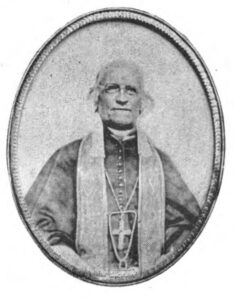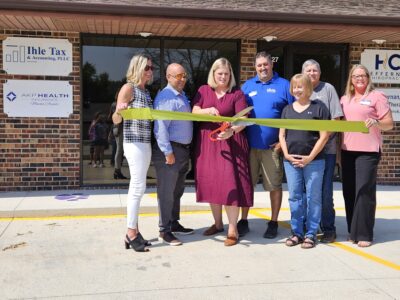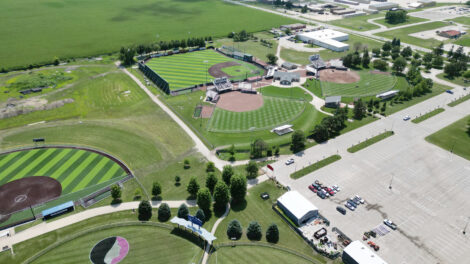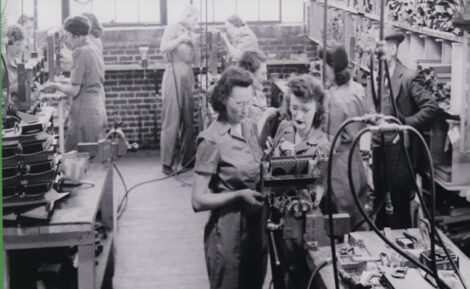From Rome to the wide Iowa prairies
From Rome to the wide Iowa prairies
-
— Image courtesy of Wikipedia
Mathias Loras, first Catholic bishop of the Diocese of Dubuque.
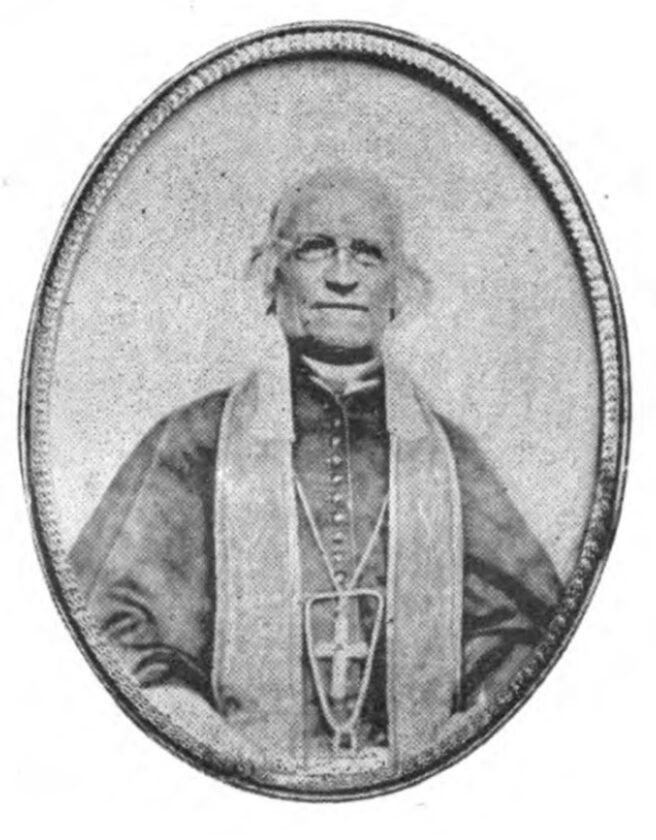
— Image courtesy of Wikipedia
Mathias Loras, first Catholic bishop of the Diocese of Dubuque.
The right man for the job
To our eyes, Williams, Iowa, looks unremarkable: a town of barely 300, set in a sea of corn and soybean fields. But to Mathias Loras, first Catholic bishop of the Diocese of Dubuque, Williams and towns like it were the culmination of a bold dream.
Before we go any further: this tale matters because on Sunday St. Mary’s Catholic Church in Williams will celebrate its 150th anniversary. The public is invited to the 3 p.m. Mass.
But back to Loras
Loras was born in 1792 into a wealthy, aristocratic and devoutly Catholic family in Lyons, France. While a seminarian, he made two life-long friends who helped form his formidable faith: Jean-Baptiste Vianney, later St. John Vianney; and James Whitfield, future archbishop of Baltimore, Maryland, who would one day play a pivotal role in Loras’s elevation at Dubuque.
Nov. 1, 1829, Loras left France with the Rev. Michael Poitier, a fellow Frenchman who had come home to recruit priests for service in the Diocese of Mobile, Alabama, of which he had recently been named bishop. From 1830-1837, Loras served as both vicar general of Mobile, and rector of Mobile’s Cathedral of the Immaculate Conception.
In 1837, Pope Gregory XVI, with the strong support of James Whitfield, named Loras first bishop of the Diocese of Dubuque. The new diocese was far flung, covering all of present-day Iowa and Minnesota and large parts of Wisconsin, South and North Dakota. In this vast region, there were exactly three parishes, an Indian mission outpost, and one priest.
Potential for development of the diocese was almost unlimited, but so was the zeal Loras brought to his new job.
Except for a different region of the country, Loras and his situation were practically identical to that of fellow Frenchman Fr. Jean-Batiste Lamy, first Archbishop of Santa Fe, New Mexico, and real-life protagonist of Willa Cather’s novella “Death Comes for The Archbishop.”
Williams is born
Williams was named for Major William Williams, founder of Fort Dodge, by John I. Blair, chief engineer of the Dubuque & Sioux City Railroad in 1869. The town was platted in the winter of 1868-9, four blocks east-to-west, and three-and-a-half blocks north-to-south.
Like many northern Iowa towns, the earliest European settlers in Williams were mostly German farmers and Irish railroad workers. Many were Catholic, and the presence of a parish church often determined where they would ultimately put down roots.
In 1840, Germany, per se, didn’t exist. German speakers lived in parts of modern-day France, Austria, Poland and Switzerland. Often, U.S. Customs inspectors classified new arrivals from all these countries as German because that’s the language they spoke.
In the late 1840s, many fled the German territories due to conscription, war, taxes and religious persecution. Known as the “forty-eighters,” they were the largest group of foreign-born people to settle in Iowa up to 1870.
Many Irish emigrated to escape the devastating potato famine of 1845-52.
Another incentive for such people to come to Iowa was inexpensive farmland. The Homestead Act of 1862 guaranteed title for up to 160 acres at $1.25 an acre ($2.50 within government railroad land grants.) The only requirement was agreeing to occupy the land for at least 14 months.
For Europeans seeking to start a new life, it was an offer unmatched in the world.
Loras knew established Catholic parishes were a beacon to settlers. His simple objective was to fill the diocese with strong settlements capable of growing into larger ones. In 1840, Loras dispatched Fr. Lucien Galtier, a priest born in southern France, to minister to Catholics on the Mississippi River in present-day Minnesota. The tiny log chapel Galtier built grew into the city of St. Paul, today the state capital, and one of the most Catholic cities in America.
Loras wrote to newspapers in the eastern U.S. and Europe, promoting Iowa as an ideal place to live, principally due to the low cost of land. He wrote, and later visited seminaries in Germany and Ireland, encouraging them to send priests and parishioners to Iowa to populate and care for his new settlements.
Due to the low cost of land in Iowa, Loras bought up both town lots and rural plots, reserving them to establish future parishes, hospitals, schools, orphanages and even a university. He bought 40 acres in Cummings, near Des Moines, in 1852 to establish an “Irish colony,” ultimately building St. Patrick’s Church, which remains viable today.
Even today, we can still see the success of Loras’s work of nearly 200 years ago. The U.S. average for those with Irish heritage is 9.1%. In Hamilton County, it’s 11.1% (2022 data).
Between 1852 and 1856, as many as 10,000 laborers were at work building the mainline of the Illinois Central from Galena to Cairo, the world’s largest construction project at that time. The Illinois Central began pushing west from Chicago in 1865 with the end of the Civil War.
Track reached Iowa Falls in 1865 and Williams in 1869.
Although Mass was said in the homes of the faithful in the early years, in 1871 a parish was formally established in Williams as a mission of the church in Webster City. In 1875, the first St. Mary’s Church was built, but destroyed by high winds 20 years later.
Death finally came for Bishop Loras on February 19, 1858. He was laid to rest in the crypt of the new St. Raphael’s Cathedral, Dubuque, his legacy of establishing the Roman Catholic Church on the Iowa and Minnesota prairies secure.

